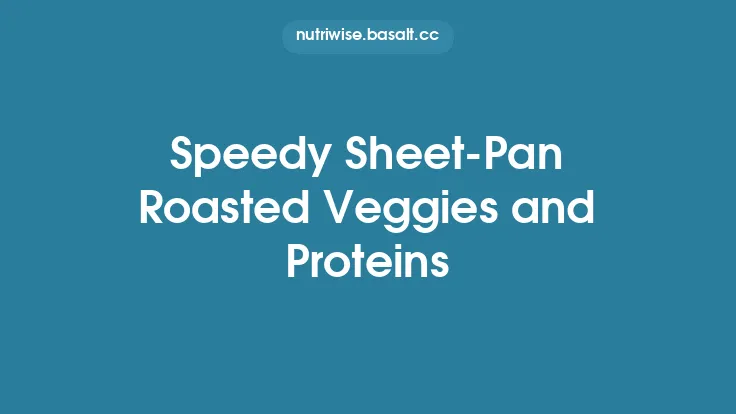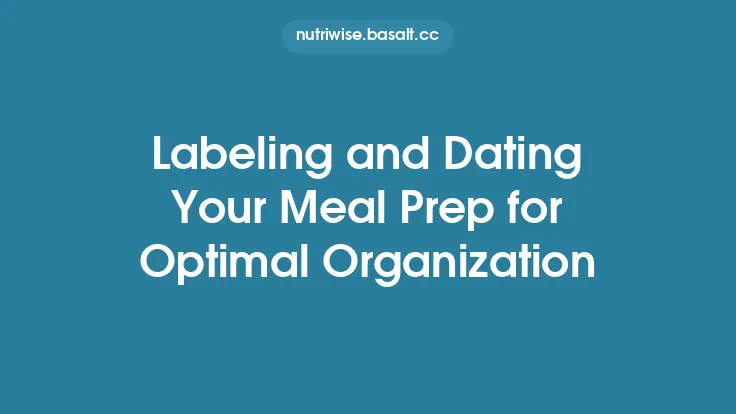When it comes to building a satisfying meal that’s both fast and nutritious, veggie‑based wraps and rolls are a standout option. They combine the convenience of handheld eating with the flexibility to adapt to whatever ingredients you have on hand, making them perfect for lunchboxes, quick dinners, or snack‑time bites. Below, we’ll explore the fundamentals of creating delicious wraps and rolls, from choosing the right base and fillings to mastering techniques that keep everything together without sacrificing texture or flavor.
Understanding the Core Components
1. The Wrap or Roll Base
The foundation of any wrap or roll determines its texture, nutritional profile, and how well it holds up to fillings. Common options include:
| Base Type | Typical Ingredients | Texture | Nutritional Highlights | Best Uses |
|---|---|---|---|---|
| Whole‑wheat tortillas | Whole‑wheat flour, water, oil, salt | Soft, pliable | Fiber, B‑vitamins, iron | Classic lunch wraps |
| Collard or kale leaves | Fresh leaves, optional blanching | Slightly crisp, sturdy | Vitamin K, A, C, calcium | Low‑carb, gluten‑free rolls |
| Rice paper | Rice flour, water | Delicate, translucent | Low‑fat, gluten‑free | Fresh spring rolls |
| Nori sheets | Seaweed, sometimes toasted | Slightly salty, crisp when dry | Iodine, omega‑3s | Sushi‑style veggie rolls |
| Low‑carb almond flour wraps | Almond flour, eggs, psyllium husk | Slightly chewy, dense | Healthy fats, protein, low net carbs | Keto‑friendly options |
When selecting a base, consider the desired mouthfeel and any dietary restrictions. For a truly “speedy” experience, keep a stash of pre‑sliced tortillas or pre‑cut collard leaves in the fridge; they can be used straight from the pack.
2. The Spread or Binding Layer
A thin layer of spread not only adds flavor but also helps seal the wrap and prevent sogginess. Popular choices include:
- Hummus (classic, roasted red pepper, or avocado‑lime)
- Greek yogurt mixed with herbs (tarragon, dill, lemon zest)
- Nut‑butter blends (almond + a dash of soy sauce for an umami twist)
- Tahini‑lemon drizzle
- Pesto (basil, arugula, or sun‑dried tomato)
Apply a thin, even coat—about a tablespoon per large tortilla—to keep the wrap manageable.
3. The Crunch Factor
Texture contrast is key. Adding a crunchy element prevents the wrap from feeling mushy and adds visual interest. Options that stay fresh for several days include:
- Shredded carrots
- Thinly sliced bell peppers
- Crisp cucumber strips
- Radish ribbons
- Roasted chickpeas (lightly seasoned)
- Toasted nuts or seeds (pumpkin, sunflower, sesame)
4. The Protein Component
While the focus is veggie‑based, a protein boost can make the wrap more satiating. Quick, plant‑based proteins work best:
- Marinated tofu cubes (pan‑seared or baked)
- Tempeh strips (marinated in soy‑ginger)
- Edamame beans (shelled)
- Lentil or bean spreads (mashed chickpeas with lemon)
- Cottage cheese or ricotta (for a creamy texture)
5. The Flavor Enhancers
A few well‑chosen herbs, spices, and sauces can elevate a simple wrap to a flavor‑packed delight:
- Fresh herbs: cilantro, mint, basil, parsley
- Acidic notes: lime juice, apple cider vinegar, pickled jalapeños
- Umami boosters: soy sauce, miso paste, nutritional yeast
- Sweet touches: honey drizzle, pomegranate seeds, dried cranberries (use sparingly)
Step‑by‑Step Assembly Techniques
Preparing the Base
- Warm the tortilla (if using) for 10–15 seconds in a microwave or on a dry skillet. This makes it more pliable and less likely to tear.
- Blanch collard/kale leaves (optional): Submerge in boiling water for 30 seconds, then shock in ice water. Pat dry. This softens the fibers while preserving color.
- Moisten rice paper: Dip briefly (5–10 seconds) in warm water until just translucent; lay flat on a damp kitchen towel.
Layering Order
A reliable layering sequence helps maintain structural integrity:
- Spread – thin, even layer across the entire surface.
- Leafy greens – a handful of mixed greens (spinach, arugula) for bulk.
- Crunch – a thin line of shredded veggies or nuts.
- Protein – evenly spaced portions to avoid clumping.
- Flavor enhancers – drizzle sauces, sprinkle herbs, add a squeeze of citrus.
Rolling vs. Folding
- Wrap (tortilla/flatbread): Fold the sides inwards, then roll tightly from one edge to the other.
- Spring roll (rice paper): Fold the bottom edge over the filling, tuck in the sides, and roll tightly, keeping the seam side down.
- Collard roll: Similar to a spring roll, but the thicker leaf may require a gentle press to seal.
Securing the Wrap
- Toothpicks: Ideal for quick transport; remove before eating.
- Wrap in parchment: Keeps the roll together and prevents moisture loss.
- Reusable silicone bands: Eco‑friendly alternative to plastic wrap.
Customizable Core Recipes
Below are three base recipes that can be mixed and matched with the components above. Each can be prepared in under 10 minutes and stored for up to three days in the refrigerator.
1. Mediterranean Veggie Wrap
- Base: Whole‑wheat tortilla
- Spread: Garlic‑herb hummus (2 tbsp)
- Greens: Baby spinach
- Crunch: Sliced cucumber, roasted red pepper strips
- Protein: Crumbled feta (optional) or marinated tofu cubes
- Enhancers: Kalamata olives, fresh oregano, a drizzle of balsamic reduction
2. Asian‑Inspired Spring Roll
- Base: Rice paper
- Spread: Light tahini‑lime sauce (1 tbsp)
- Greens: Shredded napa cabbage, mint leaves
- Crunch: Julienned carrots, toasted sesame seeds
- Protein: Tempeh strips marinated in soy‑ginger (½ cup)
- Enhancers: Pickled daikon, a dash of sriracha
3. Southwest Collard Roll
- Base: Blanched collard leaf
- Spread: Avocado‑lime mash (½ avocado, lime juice, pinch of salt)
- Greens: Mixed lettuce leaves
- Crunch: Corn kernels, diced red bell pepper
- Protein: Black‑bean puree (½ cup) seasoned with cumin and smoked paprika
- Enhancers: Fresh cilantro, a sprinkle of nutritional yeast
Tips for Maintaining Freshness
- Barrier Layers: Place a thin sheet of lettuce or cabbage between the spread and the base to prevent sogginess.
- Dry Fillings: Pat excess moisture from tomatoes, cucumbers, or pickles with a paper towel before adding.
- Storage: Wrap tightly in parchment or reusable silicone wraps, then place in an airtight container. Add a small piece of paper towel to absorb any stray moisture.
- Reheating: If you prefer a warm wrap, give the tortilla a quick 30‑second zap in the microwave; avoid reheating rice‑paper rolls as they become overly soft.
Nutritional Snapshot
A typical 8‑inch veggie wrap (≈300 kcal) can provide:
- Carbohydrates: 35–45 g (mostly complex, high‑fiber)
- Protein: 12–18 g (depending on protein choice)
- Fat: 8–12 g (healthy fats from nuts, avocado, or olive‑based spreads)
- Fiber: 7–10 g (from whole grains, veggies, and legumes)
- Micronutrients: Vitamin A, C, K, folate, iron, calcium, and potassium
Adjust portion sizes and ingredient ratios to meet specific dietary goals, such as higher protein for athletes or lower carbs for low‑glycemic plans.
Scaling Up for Meal Prep
When planning a week’s worth of wraps:
- Batch‑prepare spreads: Make a large bowl of hummus, tahini sauce, or yogurt‑herb mix and store in portion‑size containers.
- Pre‑cook proteins: Marinate tofu or tempeh in bulk, then bake or pan‑sear; store in airtight jars.
- Pre‑slice veggies: Use a mandoline or food processor to create uniform strips; keep them in separate containers to maintain crispness.
- Assemble on the day: If possible, assemble the wraps the night before to keep the base from getting soggy. For spring rolls, a quick assembly in the morning works well.
Creative Variations to Keep Things Fresh
- Breakfast Wrap: Swap the protein for scrambled eggs or a chickpea “omelette” and add avocado slices.
- Dessert Roll: Use a sweet tortilla, spread with almond butter, add thin banana slices, and drizzle with dark chocolate.
- Global Fusion: Combine Indian chutney with naan‑style flatbread, add spiced paneer, and garnish with cilantro.
- Seasonal Switch‑Ups: In summer, incorporate fresh corn and heirloom tomatoes; in fall, add roasted butternut squash and sage.
Common Mistakes and How to Avoid Them
| Mistake | Why It Happens | Fix |
|---|---|---|
| Wrap tears | Over‑filling or using a dry tortilla | Warm the base, limit filling to ⅔ of the surface, and roll tightly. |
| Soggy interior | Moist ingredients directly on the base | Add a dry leaf barrier or pat ingredients dry. |
| Flavor imbalance | Too much acid or salt | Taste each component separately; balance with a neutral spread. |
| Uneven texture | All crunchy or all soft ingredients | Mix at least two textures (crunch + soft) in each bite. |
| Lack of cohesion | No binding agent | Use a thin spread or a light drizzle of sauce to glue ingredients together. |
Final Thoughts
Veggie‑based wraps and rolls embody the perfect blend of speed, nutrition, and culinary creativity. By mastering the core components—choosing the right base, applying a binding spread, layering textures, and adding balanced flavors—you can craft meals that satisfy both the palate and the schedule. Whether you’re prepping for a busy workweek, feeding a family on the go, or simply craving a handheld bite of wholesome goodness, these versatile creations are ready to roll. Enjoy experimenting, and let each wrap become a canvas for your favorite seasonal produce and pantry staples.





